Artiles
Review
02 April 2025Wide-Bandgap Semiconductors: A Critical Analysis of GaN, SiC, AlGaN, Diamond, and Ga2O3 Synthesis Methods, Challenges, and Prospective Technological Innovations
The increasing demand for high-performance Wide-Bandgap (WBG) semiconductors, including GaN, SiC, and emerging Ultrawide-Bandgap (UWBG) materials such as Ga2O3 and diamond, has driven significant advancements in epitaxial growth techniques. However, achieving scalability, defect-free growth, and sustainability remains a major challenge. This review systematically evaluates Molecular Beam Epitaxy (MBE), Metal-Organic Chemical Vapor Deposition (MOCVD), Hydride Vapor Phase Epitaxy (HVPE), and other novel growth and hybrid growth techniques, emphasizing energy efficiency, defect control, and environmental impact. Industry 4.0-driven AI-based process optimization and closed-loop recycling have emerged as transformative strategies, reducing waste and improving manufacturing efficiency. Key findings reveal that HVPE enables rapid defect-free GaN fabrication, Hot-Filament CVD enhances SiC growth with superior thermal properties, and Atomic Layer Epitaxy (ALE) achieves sub-nanometer precision crucial for next-generation quantum and RF applications. Despite these advancements, p-type doping in UWBG materials, substrate compatibility, and thermal management remain unresolved challenges. Future research must focus on scalable eco-friendly epitaxy, novel doping mechanisms, and policy-driven sustainability efforts. This review provides a comprehensive roadmap for sustainable WBG semiconductor manufacturing, bridging materials innovation, energy efficiency, and industrial adoption to support the next generation of power electronics and optoelectronics.
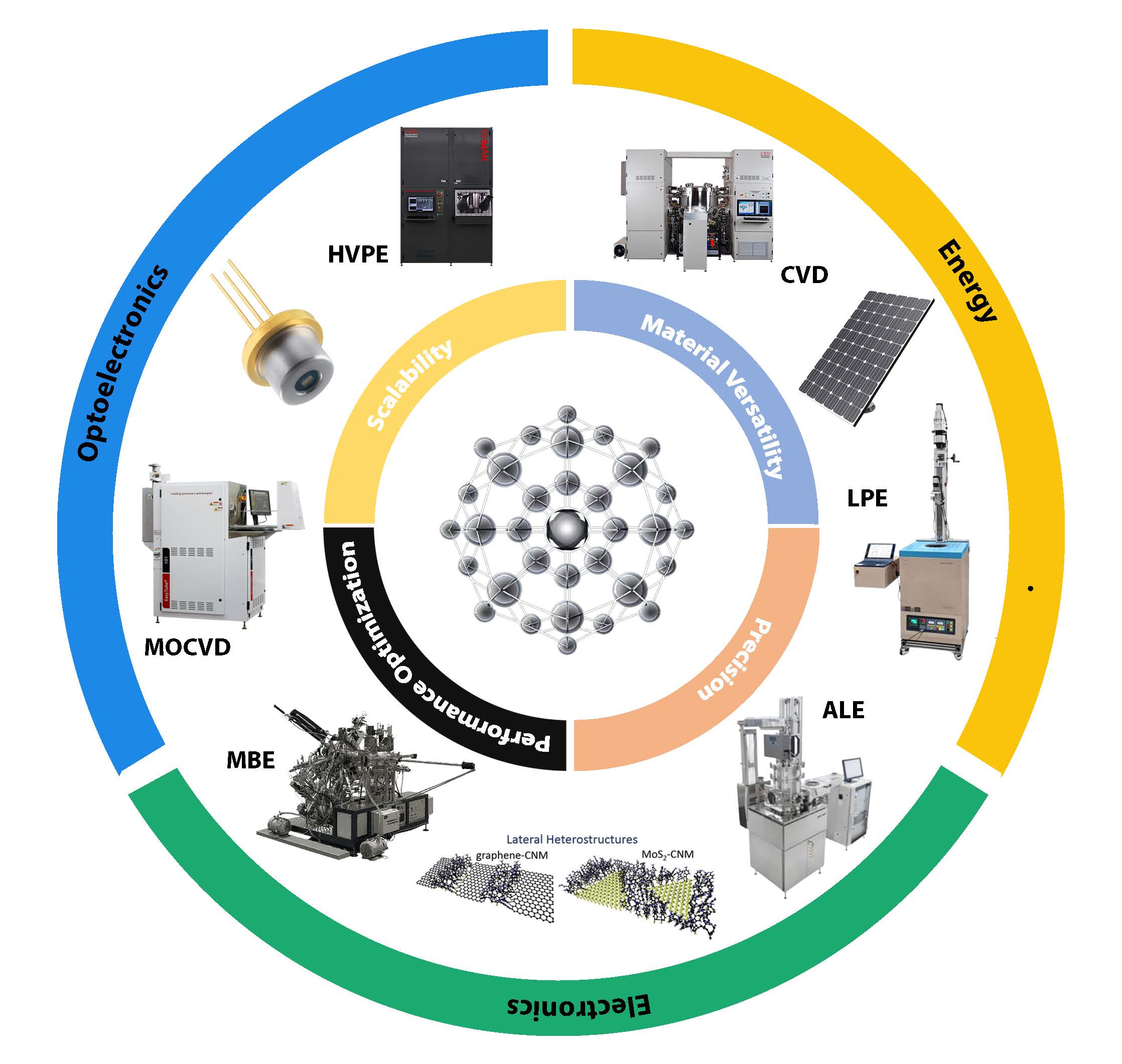
Article
02 April 2025On Hidden Mathematics in the Artwork of the Indigenous People of Brazil
Using examples from indigenous art in Brazil, this paper demonstrates that these works contain “hidden mathematics” (such as symmetry, striped ornaments, rows, etc.), which challenges the traditional notion of “primitive art”.
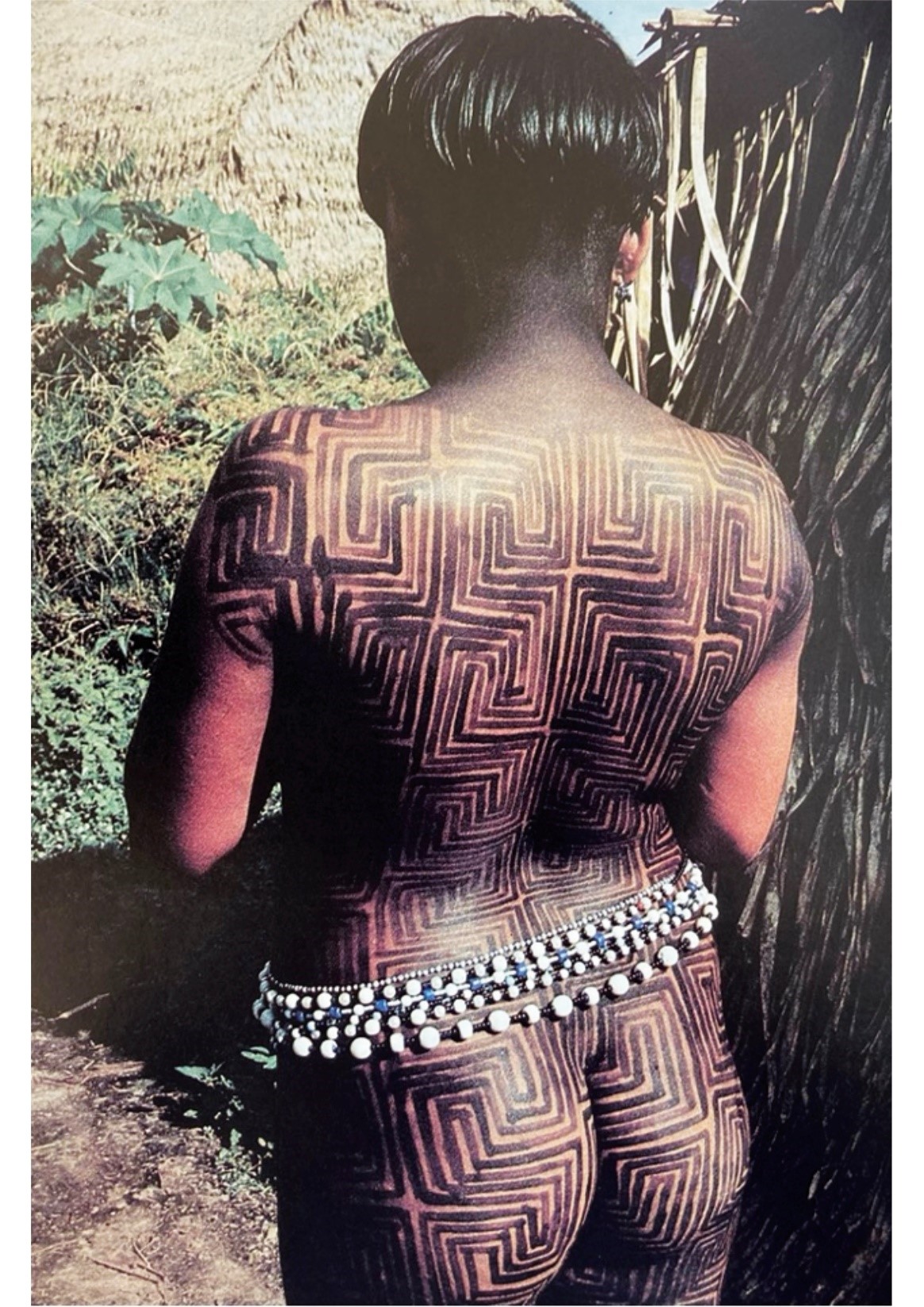
Article
01 April 2025B, Gd Co-Doped TiO2 Nanotube Arrays for Efficient Degradation of Gaseous Toluene under Visible Light Irradiation
Although photocatalytic degradation of VOCs has attracted widespread attention, the efficient visible-light-driven photocatalytic degradation performance remains a challenge. This work presents the visible-light-driven photocatalytic degradation of gaseous toluene over B, Gd co-doped TiO2 nanotube arrays prepared via a controllable electrochemistry method. It was found that B and Gd co-doping strategy not only enhances the visible light responsiveness of TiO2 nanotube arrays but also introduces moderate oxygen vacancies on the surface of TiO2, which is beneficial to the formation of free hydroxyl radicals and their attack on toluene molecules. The doping order also affects the photocatalytic performance. The optimized sample achieves an enhanced degradation efficiency for toluene under visible light irradiation and exhibits considerable stability. This work may provide an efficient TiO2-based photocatalyst for the removal of volatile organic compounds for air purification and give an understanding of the mechanism of photocatalytic degradation of toluene over co-doping TiO2.
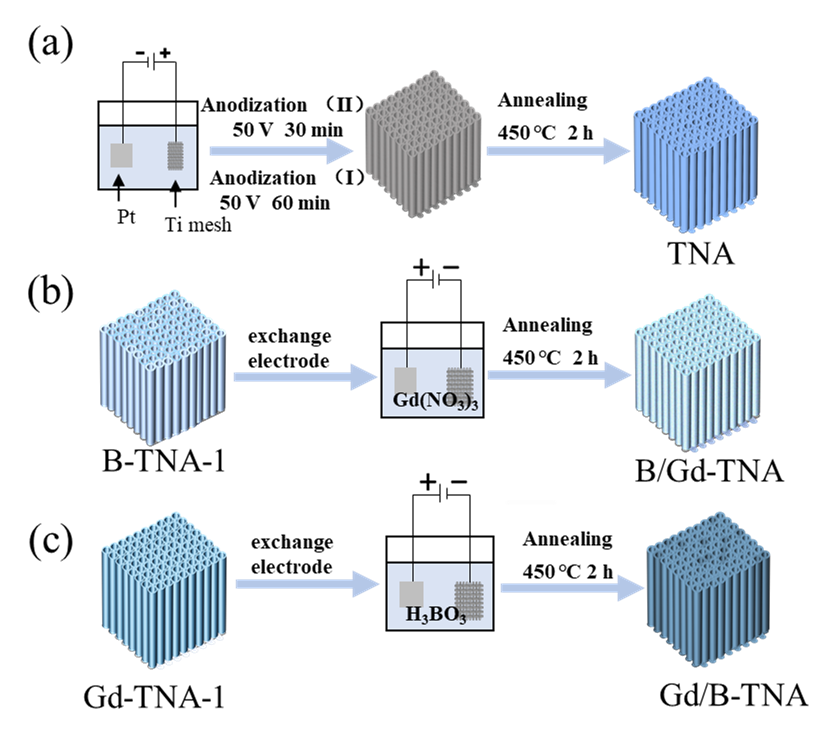
Review
01 April 2025Sustainable Manufacturing and Applications of Wide-Bandgap Semiconductors—A Review
Wide-bandgap (WBG) semiconductors such as silicon carbide (SiC) and gallium nitride (GaN) are revolutionizing high-power electronics due to their superior thermal conductivity, breakdown voltage, and energy efficiency. These materials are critical in electric vehicles, renewable energy systems, and high-frequency applications like 5G infrastructure. However, their production processes are resource-intensive and present significant environmental challenges. This review evaluates recent advancements in sustainable WBG semiconductor manufacturing, focusing on low-energy epitaxial growth, closed-loop recycling, and the mitigation of toxic by-products. Additionally, it highlights the role of Industry 4.0 innovations, such as AI-driven process optimization and IoT-based resource management, in enhancing sustainability. The review identifies research gaps in cost reduction, alternative WBG materials like Gallium Oxide (Ga2O3) and Diamond, and scalable green manufacturing solutions. It underscores the necessity for industry-wide collaboration and regulatory frameworks to drive the adoption of eco-friendly semiconductor fabrication. The findings of this study provide a roadmap for advancing sustainability in WBG semiconductor production, ensuring their long-term viability in the transition toward energy-efficient technologies.
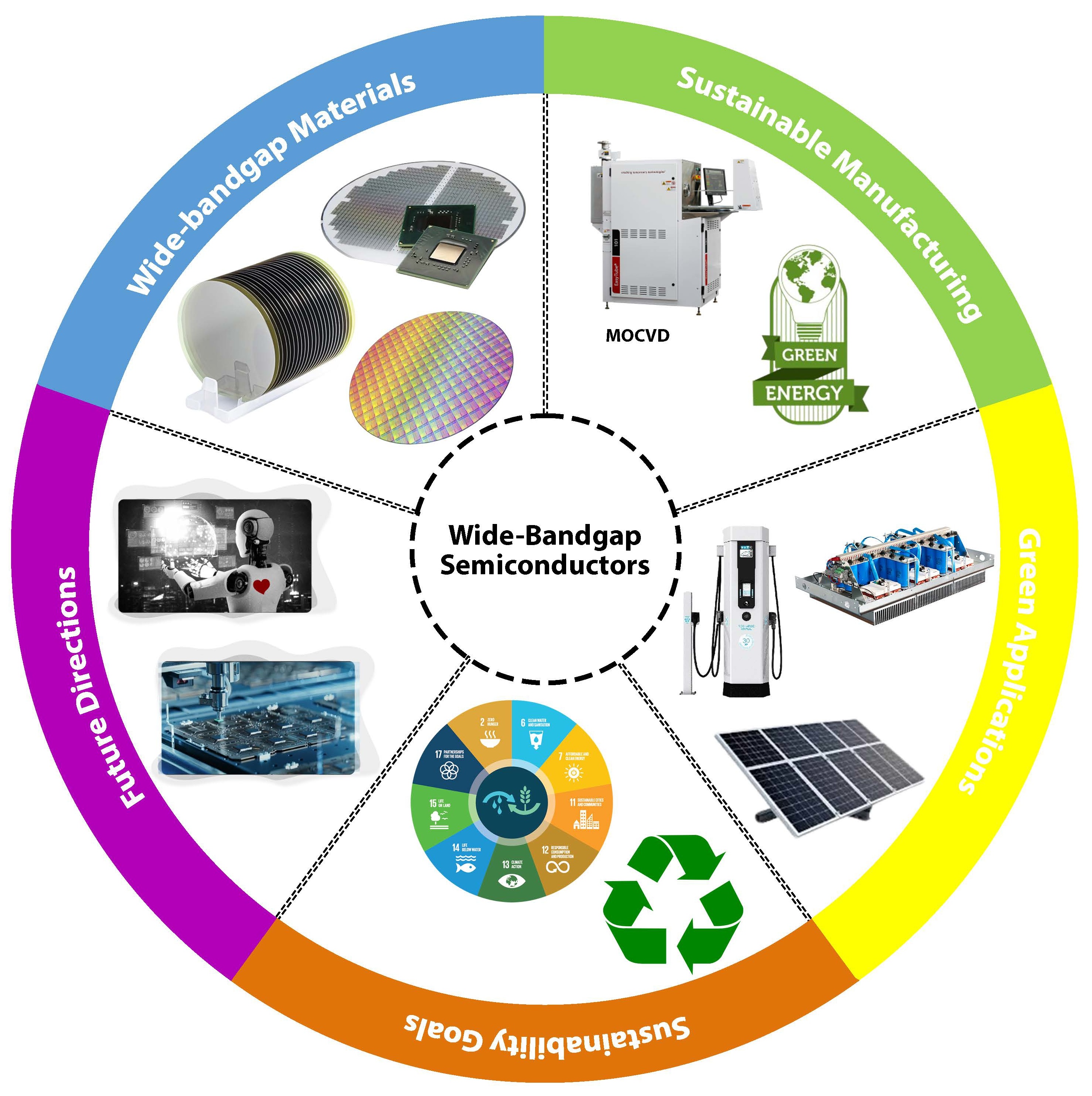
Case Report
01 April 2025Behcet’s Disease: An Uncommon Cause of Severe Tricuspid Stenosis
Behçet’s disease is a vasculitic condition of unknown etiology that is characterized by oral and genital ulcers as well as various skin and ocular lesions. Cardiovascular manifestations of Behçet’s disease are rare, with very few cases having been reported previously in literature. We report a case of severe tricuspid stenosis and pulmonary artery aneurysm in a 29-year-old man with Behçet’s disease, who demonstrated characteristic vascular findings on computed tomography angiography and diagnostic valvular findings on transthoracic echocardiogram and cardiac magnetic resonance imaging. The patient’s Behçet’s disease was treated initially with cyclophosphamide, azathioprine, and prednisone, which subsequently led to complete resolution of the pulmonary artery aneurysm. As for the tricuspid stenosis, though symptoms were managed with diuretic therapy, the severity of valvular dysfunction required consideration and an attempt at tricuspid valve replacement surgery, which unfortunately was met with complications and led to an unfavorable outcome of refractory cardiogenic shock and death. Given the rarity of cardiovascular involvement in patients with Behçet’s disease, along with the lack of clear treatment guidelines, management of findings of tricuspid stenosis and pulmonary artery aneurysm in these patients can be challenging.

Commentary
01 April 2025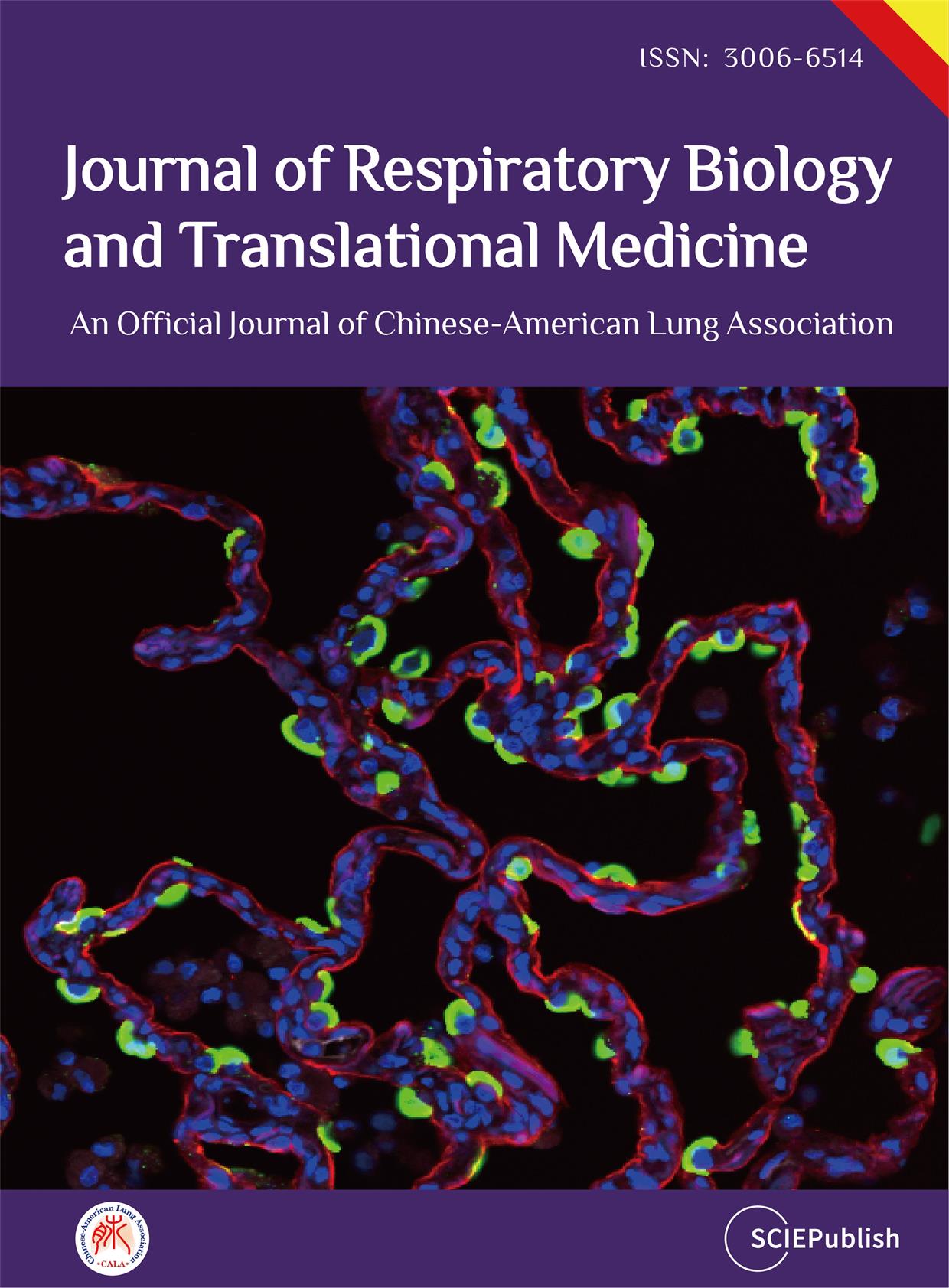
Perspective
01 April 2025Perspectives on the Development in the Selective Oxidation of Glycerol to Value-Added Chemicals via Photoelectrocatalysis Coupled with Hydrogen Evolution
Harvesting sunlight to produce clean hydrogen fuel remains one of the main challenges for solving the energy crisis and ameliorating global warming. Photoelectrochemical (PEC) water splitting is considered to be a promising method for H2 production in the future. However, the efficiency still remains challenging due to the sluggish reaction dynamics for water oxidation. Recently, the thermodynamically favorable oxidation of glycerol in PEC systems has gained significant attention for its ability to produce value-added chemicals while simultaneously generating hydrogen. This process not only enhances the yield of high-value products but also minimizes energy consumption and reduces CO2 emissions. Valuable products from glycerol oxidation include 1,3-dihydroxyacetone (DHA), glyceraldehyde (GLD), tartronic acid (TA), formic acid (FA), and glyceric acid (GA). Thus, it is important to improve selectivity and productivity. In this work, we mainly summarize the recent research progress in improving the selectivity and productivity of glycerol upgrading products on the different photoanodes.
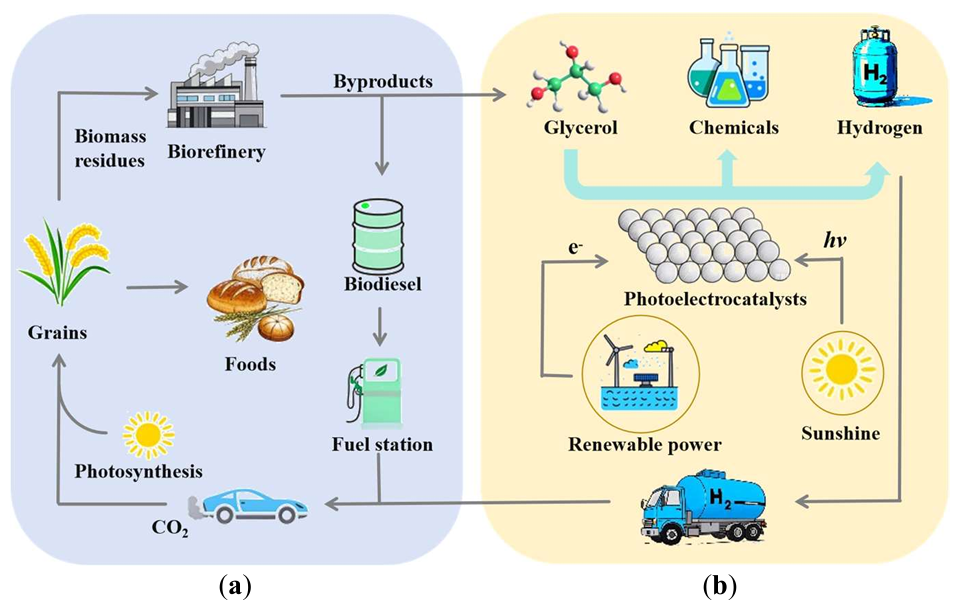
Review
31 March 2025Research Status and Development Trend of Floating Photovoltaic Structure System
Under the guidance of the dual carbon goals, the development and utilization scale of new energy in China, including photovoltaics and wind power, has steadily increased. Particularly, the floating photovoltaic technology in inland waters has been developing quickly over the past decade because it could compensate for certain shortcomings of traditional terrestrial photovoltaics. The offshore floating photovoltaic (FPV) pilot projects are also continuously emerging due to the advantages of longer daylight hours, higher radiation levels, and enhanced efficiency of light utilization in marine environments compared to terrestrial settings under identical solar irradiance conditions. To comprehensively understand the development prospects of offshore FPV systems, the development progress of FPV systems was traced, and an analysis was conducted on the forms of various types of floating structures, their technical characteristics, and their applicability in the marine environment. Summarization was carried out on the floating photovoltaic mooring system in terms of the classification of the mooring, the chain deployment mode, the form of the mooring foundation, etc., and a few new types of mooring systems were put forward. Finally, the development trend of the offshore FPV system was predicted.
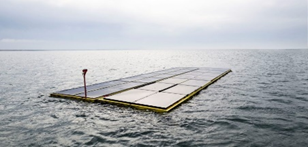
Research Highlight
31 March 2025Linear Semiconducting Polymers as Photoanodes for Oxidation Reactions
Photoelectrochemical (PEC) water splitting has attracted significant attention in the general field of photocatalysis. However, the high cost of constructing PEC systems limits their practical application. Recently, an innovative approach was proposed to synthesize linear semiconducting polymer-based films. The polymer structure was optimized for oxidation reactions. Furthermore, the active site of the optimal linear polymer was investigated through in-situ characterizations. This work has the potential to address the challenges of high material costs and polymer film development in PEC technology.
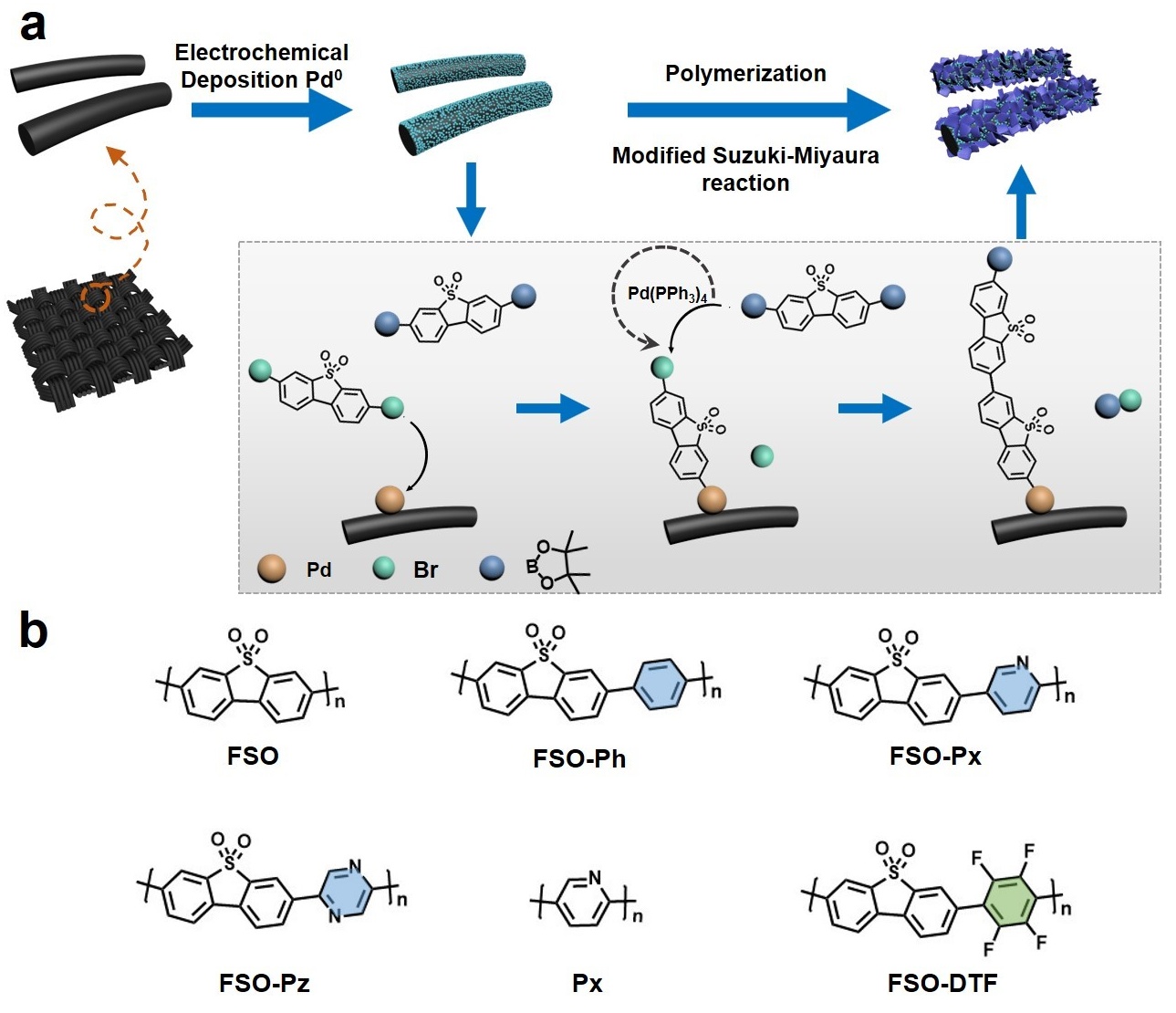
Review
31 March 2025Advances in CAR-T Cell Therapy for Solid Tumors
Chimeric Antigen Receptor T (CAR-T) cell therapy represents a groundbreaking advancement in cancer treatment, demonstrating remarkable antitumor efficacy in hematological malignancies. However, despite the substantial clinical progress achieved with CAR-T cell therapy, its application in the treatment of solid tumors remains limited by various factors, including the intricate tumor microenvironment (TME), CAR-T cell exhaustion, CAR-T cell infiltration into tumor tissue, and antigen heterogeneity. Scientists are relentlessly pursuing research in this domain, driven by the aim of offering newfound hope to cancer patients. In this comprehensive review, we delineate the fundamental principles underlying CAR-T cell therapy, delve into the challenges it encounters, and provide an insightful exploration of the advancements and progress made in the application of CAR-T cell therapy for solid tumors.
